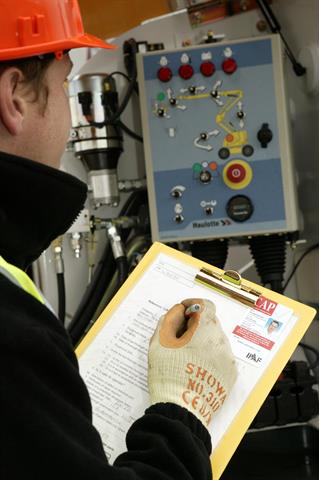 The guidance document outlines a major inspection scheme to validate the structural integrity and functionality of an AWP. |
The International Powered Access Federation (IPAF) has introduced a technical guidance on major inspections of aerial work platforms (AWPs) aimed at keeping equipment safe beyond the manufacturers' design life.
The document outlines a major inspection scheme to validate the structural integrity and functionality of critical components of an AWP. The scheme can determine if a machine is within safe design and use criteria beyond the manufacturer's design life. Design life is defined as the duration determined by the manufacturer for which a structure or a structural component may be used for its intended purpose with recommended maintenance.
"AWPs are safe by design and constructed to set criteria as defined by national and international standards, dependent on which country/continent they are intended to be first put into service," says IPAF technical and safety executive Chris Wraith.
"The growing demand around the world for second-hand machines and the retention of machines in some rental fleets has led to the use of AWPs beyond the original design life. We need to recognise that there are machines in use which have been in service for 10 years or more, yet may not have reached their design life with regard to usage, and have reached their design life prior to 10 years because of intensive usage or use in a severe operating environment. This is where the new guidance comes in," he explains.
The document reiterates that equipment owners should fulfill their legal obligations and ensure that AWPs are maintained in good repair and safe working order by implementing regular inspection and maintenance programs in accordance with local, state or federal regulations, legislation, directives, standards and manufacturer's requirements.
These may include pre-use inspection; interim, frequent or periodic inspections; and six-monthly or annual inspection/examination by a competent person.
"The harsher the operating environment, the more frequent the inspection should be," Wraith says. "Depending on the frequency of use and severity of the operating environment, planned inspections should be carried out at a frequency to enable the AWP to be kept in a safe and satisfactory condition."
The document proposes that an AWP should undergo a major inspection within 10 years after having been originally put into service and subsequently every five years after that.
The scheme can also be used to assist owners determine if an AWP is within safe design and use criteria when they acquire a machine with insufficient service, maintenance history and inspection records, or suspect an AWP to have been exposed to exceptional circumstances that may have affected the structural integrity of critical components, thus jeopardising its safe use.
IPAF's new guidance on major inspections is available at
www.ipaf.org/inspections and at the Publications/Technical Guidance section of
www.ipaf.org.